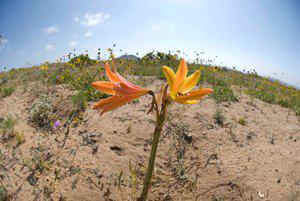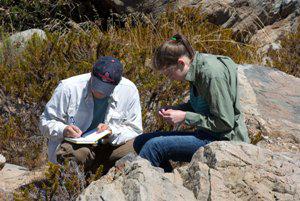Rodrigo S. Rios
Ongoing desertification thru grazing by goats threatens arid ecosystems of Coquimbo, Chile. This study will examine the effect of overgrazing on community structure and species interactions to evaluate the current status of plant communities and contribute to long-term management strategies for both habitat conservation and livestock production.

Overgrazing by goats is one of the main threats to arid ecosystems worldwide, often leading to ecosystem degradation and biodiversity loss. In Chile, where 46% of the flora is endemic, the Coquimbo region has both the highest number of endemic plants (140), and the highest use of natural habitats for production of goats (37000 Km2, encompassing over 57% of all goats in Chile). Overgrazing by goats is the greatest threat to desert habitats in Coquimbo. Of 1.478 native plant species occurring in the region, 14% are vulnerable or endangered and two endemics have gone extinct. Overgrazing has placed 23 species in a vulnerable or endangered category. Ultimately, overgrazing by goats can alter plant community structure, but it is uncertain if it is by inducing changes in plant abundance, population structure and/or diversity.

To design relevant management strategies it is imperative to clearly understand the effects of overgrazing both on plant community structure and on species interactions. This study is a first step towards this goal. Using enclosures of 100-ha we will assess: First, changes in diversity, cover and composition of plant communities in areas with and without goats. Thus, we will quantify vegetation changes and land degradation, which can ultimately affect ecosystem function. Understanding the effects of overgrazing will provide necessary input to assess the degree to which the use of these lands for livestock is sustainable in the region. Second, we will quantify changes in species interactions key for community structure. Goats can change vegetation but little is known on how grazing alters important species interactions for community organization (i.e., facilitation and competition). Interactions are a dominant driver of community dynamics, and therefore understanding the prevalence of species interactions under different grazing regimes is key for management action and conservation.
Finally, we will assess grazing pressure to provide an estimate of the impact that goats have on specific plant species. Grazing is highly associated with decreases in plant growth and reproduction. Areas with higher grazing intensity experience greater herbivory of palatable species and, in turn, strongly modify species abundance in the community. This information is vital to identify the number of species susceptible to grazing, and assess species declines in the region. Altogether, this study will help evaluate the current status of plant communities, which is essential to elaborate long-term management strategies for both habitat conservation and livestock production.